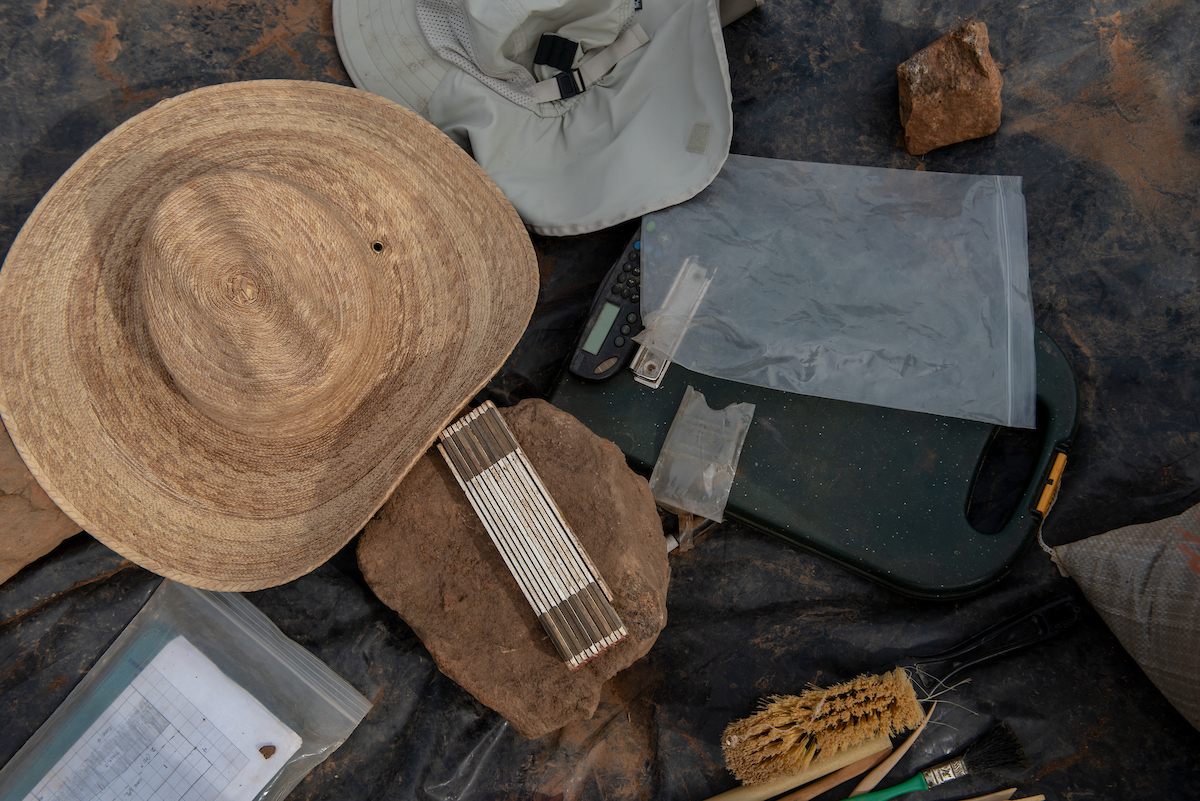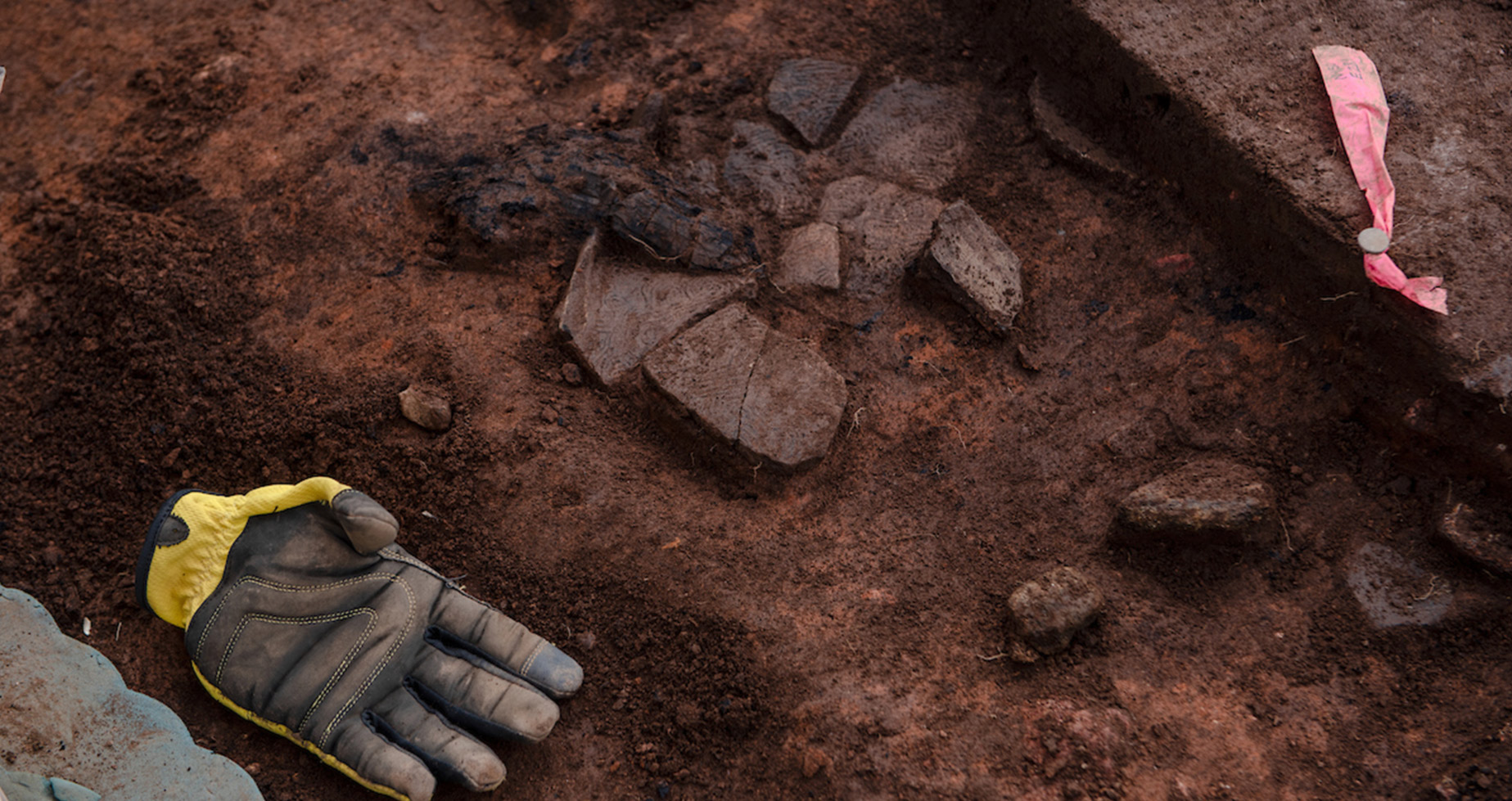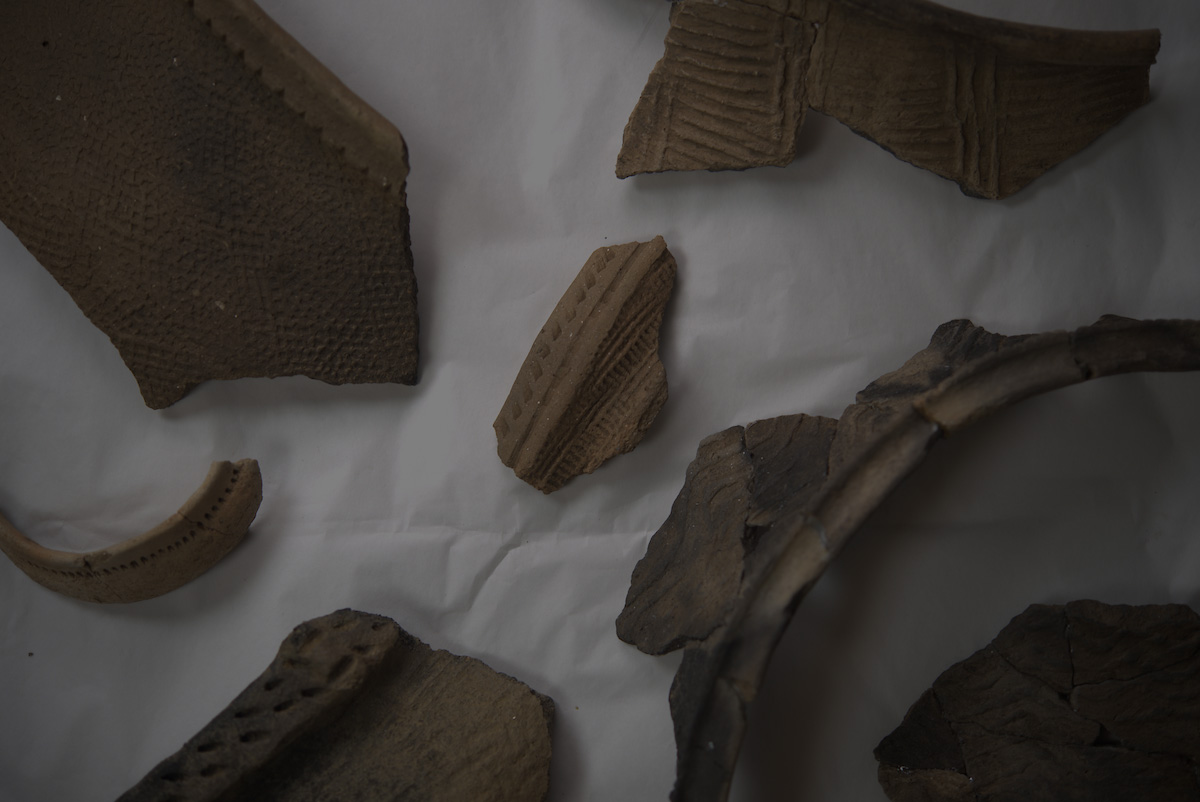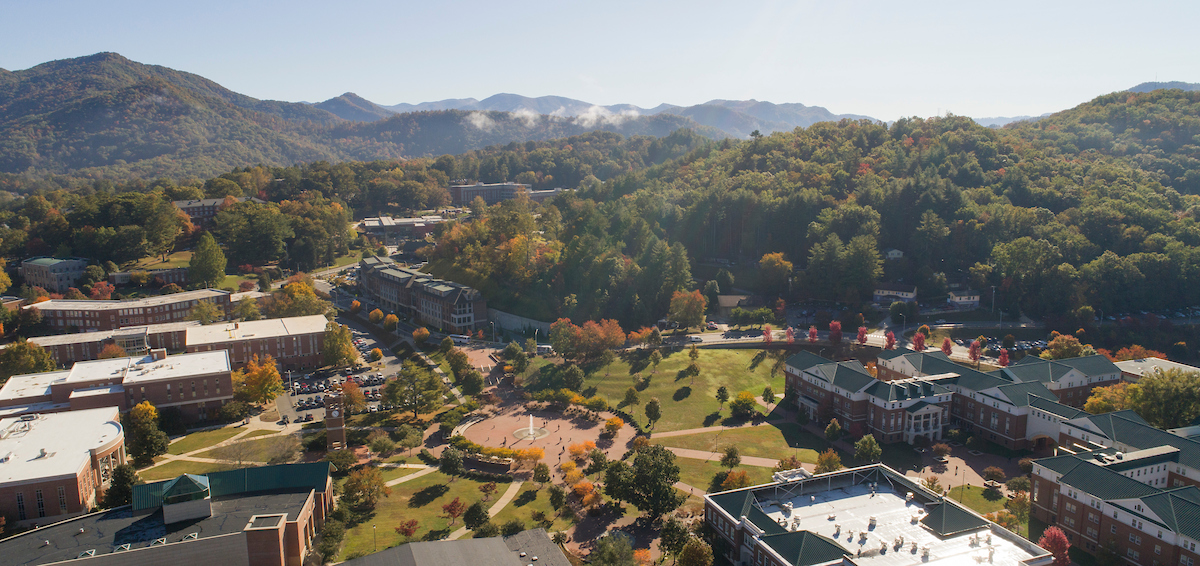










Two Sparrows Town
The Ancient Cherokee Community Emerges Again
The ground upon which Western Carolina University is built — and continues building today — has centuries of stories to tell.
Some are told in history books and museum exhibits, while others are buried away. Some reemerge through archaeological research sparked by new construction on campus, as the university upgrades, renovates and expands its facilities.


Hidden below WCU’s surface is Tali Tsisgwayahi, or “Two Sparrows Town,” the first Cherokee town of the Tuckaseigee River valley. A recent series of digs located in front of Norton Residence Hall in preparation for an intramural ballfield project revealed signs of former lives, with homes, corn cribs, a stone oven and a palisade, and other fixtures of daily living.



In the past three years, five such excavation sites have appeared across campus. The purpose has been twofold: to instruct WCU students in archaeological methods, from mapping and excavation to care and documentation of artifacts, and to develop an evaluation based on findings to assist future construction and university development.


Cherokee artifacts found during the recent research date to the Archaic period (8000-1000 B.C.), the Pisgah phase (around 1200 A.D.), the Mississippian period (900-1500 A.D.) and the mid- to late Qualla period of the 1500-1700s.

“This creates a great responsibility for the university going forward.” -Joyce Dugan ’75 MAEd ’81
Two Sparrows Town, as retraced through history, reveals years of inhabitation rivalling
that of antiquarian cities of Europe or Asia. But unlike Paris or Rome, it disappeared.
Yet the name lives on. A culmination of research and recognition was realized when
a revamped curatorial room in WCU’s McKee Building was dedicated as Tali Tsisgwayahi
Archaeological Collections Curation Facility on Dec. 5.


“This creates a great responsibility for the university going forward,” said Joyce Dugan ’75 MAEd ’81, former principal chief of the Eastern Band of Cherokee Indians and the first woman
elected to the post.
“An education is needed by this country on the accurate history of our people. This
facility highlights Western Carolina University’s commitment to the preservation and
enhancement of Cherokee history, of our heritage and of our traditional culture. As
a member of the tribe and a former leader, and on behalf of the tribe, I think I am
safe to say that we remain committed to assisting with your effort. I am really pleased
and proud today to see this come about and that the indigenous people could be involved,”
said Dugan, a member of the WCU Board of Trustees.
Funded by a $175,000 grant from the U.S. Forest Service, the renovated facility now
meets federal standards and is in accordance with tribal guidelines regarding Cherokee
artifacts. All artifacts found at the intramural field site adjacent to Norton Residence
Hall will be held there.
The collection housed in the curation facility includes numerous materials associated
with the Cherokee, including objects from the Trail of Tears and the Unicoi Turnpike.
The Trail of Tears was the forced removal of the Cherokee from their homeland in the
1830s to present-day Oklahoma, with the Unicoi Turnpike being the primary route from
Western North Carolina to eastern Tennessee. The deportation is noted for its brutality
and death toll.

The recent campus digs have been led by Ben Steere, director of WCU’s Cherokee Studies Programs and associate professor of anthropology; Brett Riggs, WCU’s Sequoyah Distinguished
Professor of Cherokee Studies; and Jane Eastman, curator of archaeological collections
and an associate professor of anthropology. Eastman created the forerunner for the Tali Tsisgwayahi Archaeological Collections
Curation Facility and has been in charge of the safekeeping of the collections since
she first arrived at WCU in 2001.
All archaeological work at WCU is carried out in consultation with the Eastern Band
of Cherokee Indians’ Tribal Historic Preservation Office and the N.C. Office of State
Archaeology.

